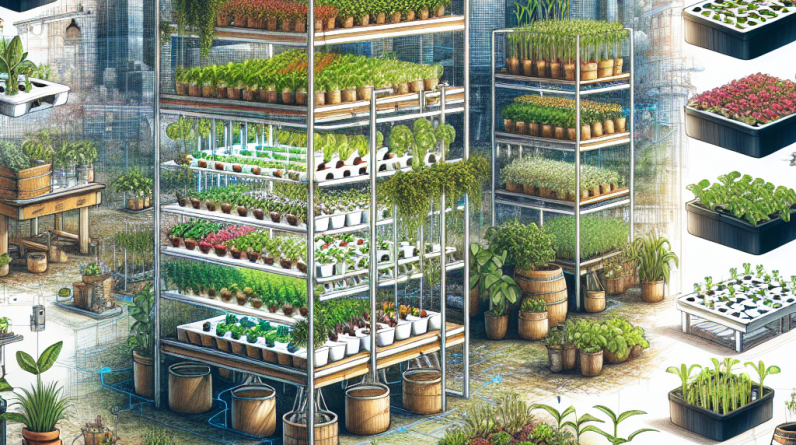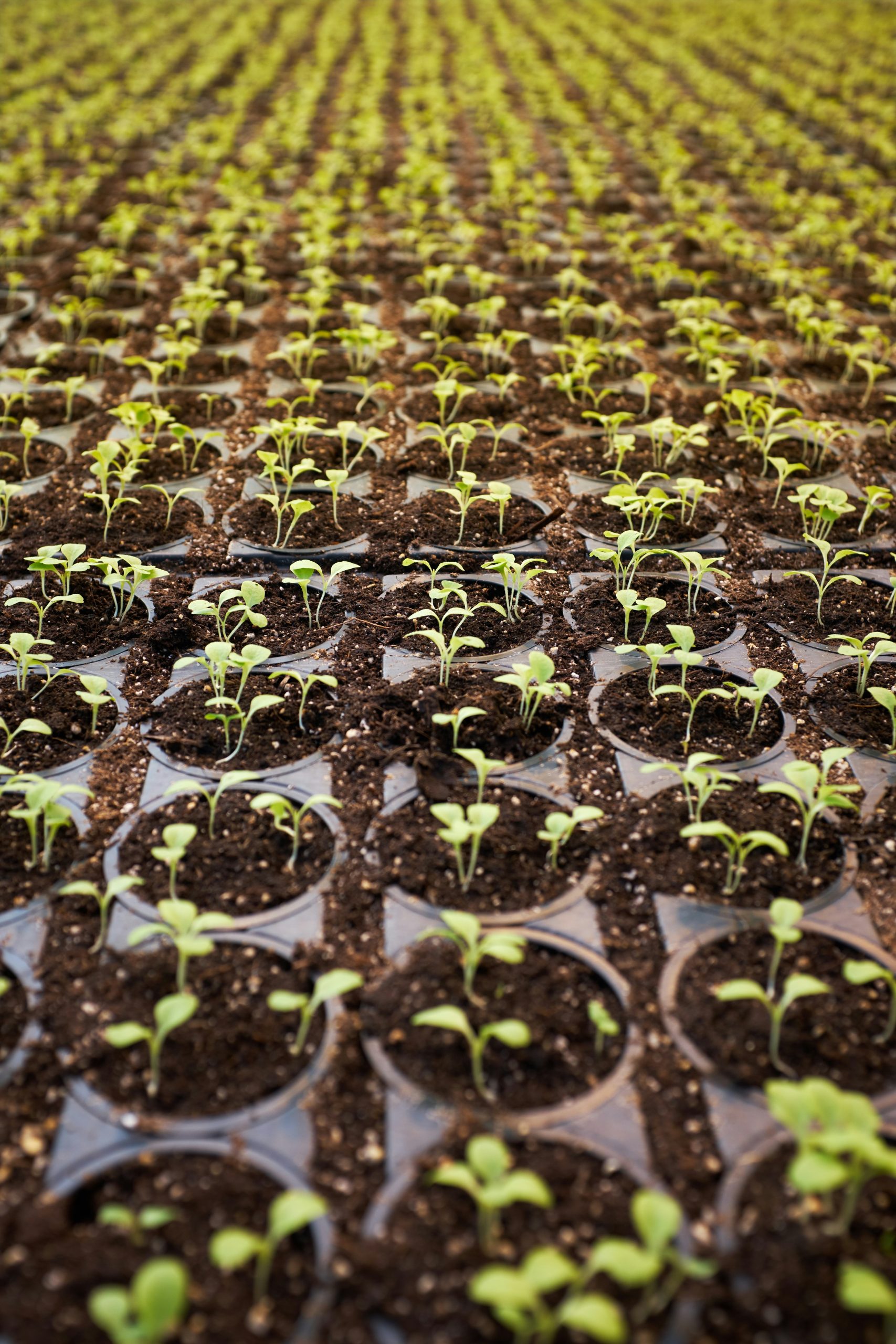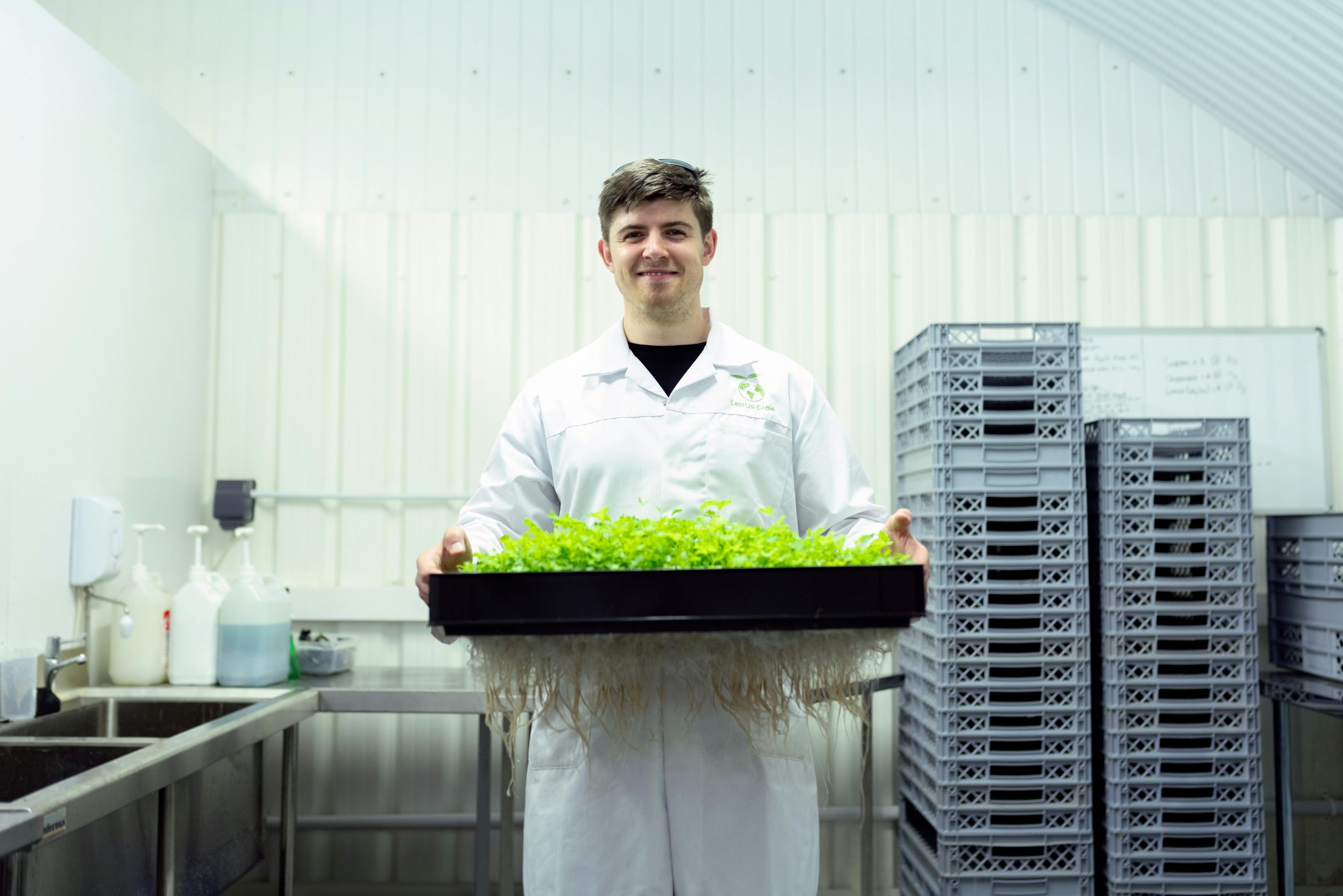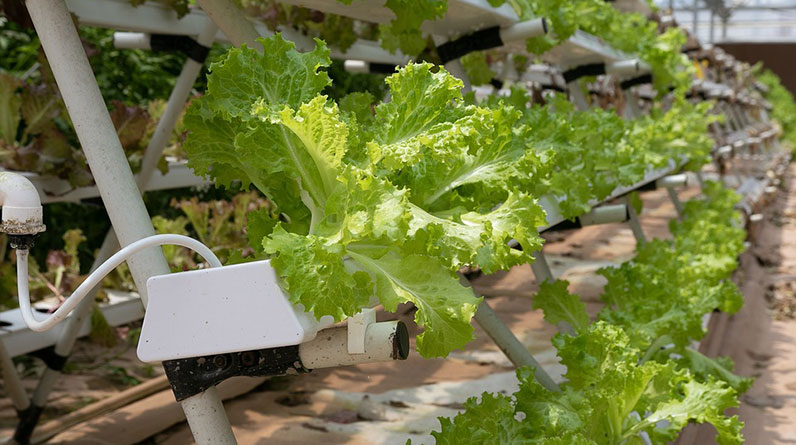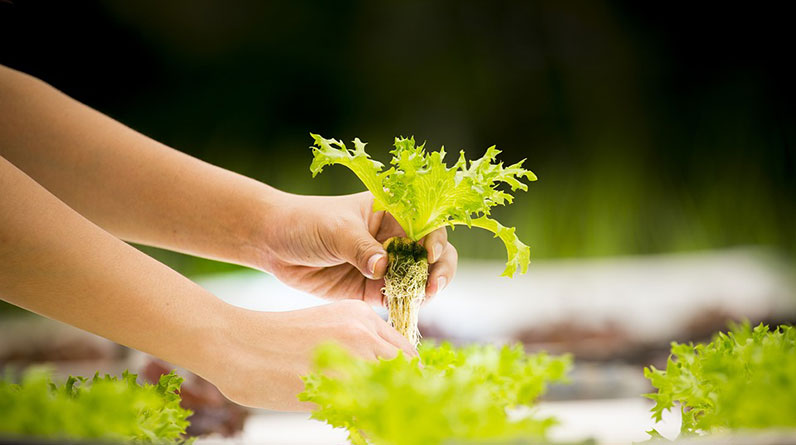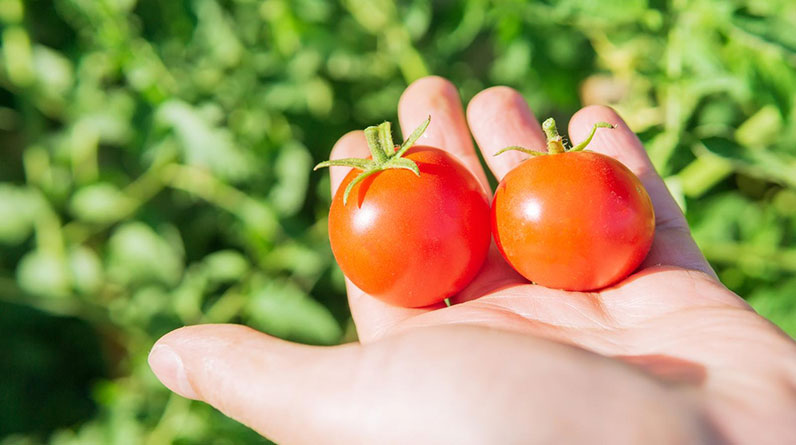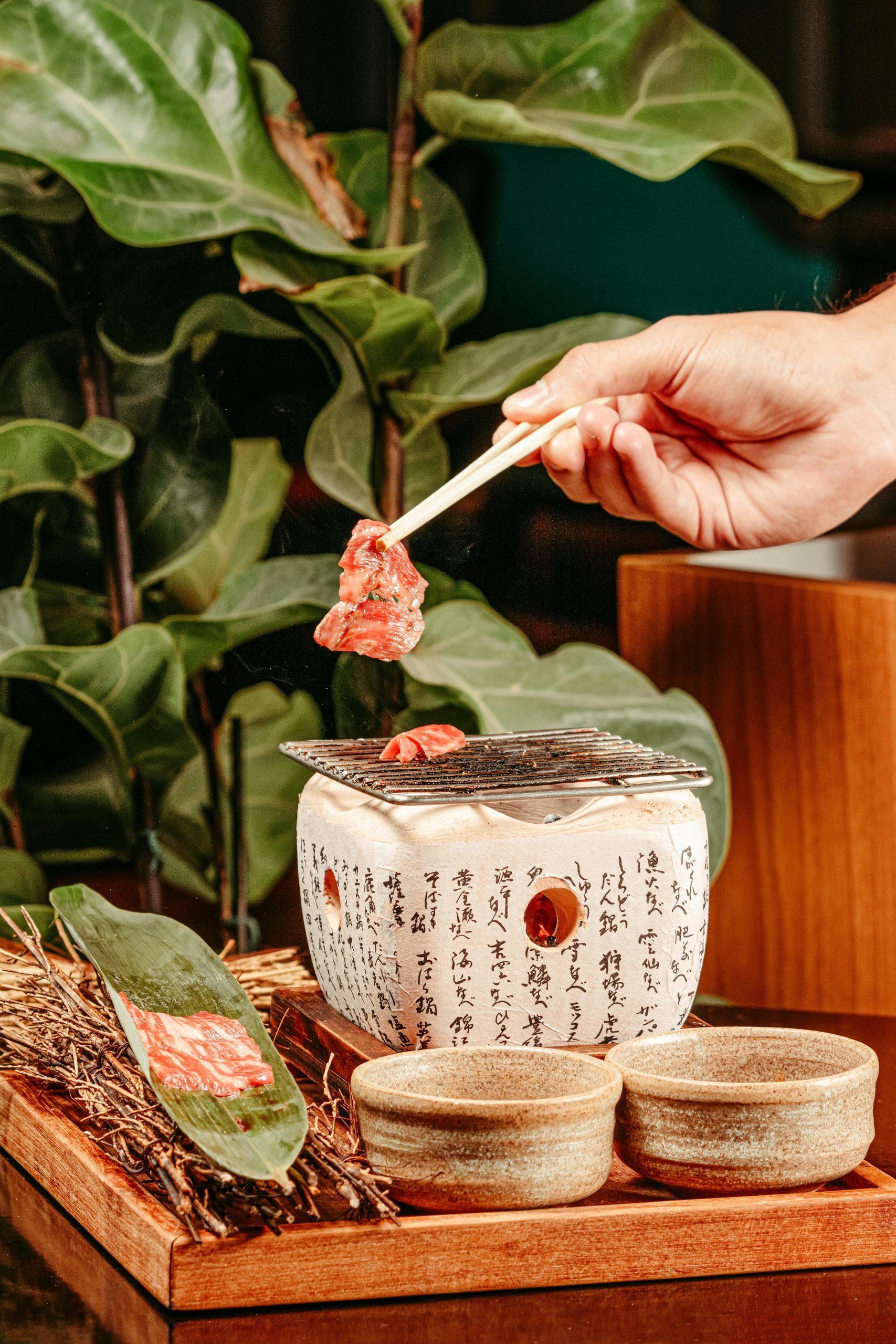
Table of Contents
- 1. Choose the Right Hydroponic System Design
- 2. Select High-Quality Growing Components
- 3. Optimize Nutrient Delivery
- 4. Maintain Proper Lighting Conditions
- 5. Implement Automated Monitoring Systems
- 6. Manage Water Quality Effectively
- 7. Choose Suitable Crops for Your DIY Hydroponic System
- 8. Troubleshoot Common Problems Efficiently
- 9. Keep Up with Sustainable Practices
- 10. Document and Refine Your System
1. Choose the Right Hydroponic System Design
Understanding Different Types
For your undoubted success in 2025, selecting the right diy hydroponic system design is crucial. Popular systems today include deep water culture (DWC), nutrient film technique (NFT), and drip systems. Each offers distinct advantages depending on your space, budget, and crop preference. For instance, DWC systems are beginner-friendly and ideal for leafy greens, while NFT is great for larger setups with continuous water flow.
When choosing a system, consider factors like scalability, maintenance needs, and your future expansion plans. A well-chosen design ensures efficient nutrient delivery and minimal wastage. My personal experience shows that starting small with a simple system like DWC helps new growers learn the basics before moving on to more complex setups in 2025.
Research current trends in 2025âsuch as aeroponics or hybrid systemsâcan give you an edge in maximizing yields and resource efficiency. Be flexible and willing to adapt your diy hydroponic system as you gain more hands-on experience.
Materials and Construction Tips
Constructing your own diy hydroponic system should involve quality, food-safe materials like UV-resistant plastics, food-grade tubing, and sturdy containers. Avoid cheap materials that degrade or leach chemicals into your nutrient solution. Using locally sourced or recycled materials can also boost sustainability.
Precision is keyâmeasure carefully and plan your layout for easy access and maintenance. Incorporate features like adjustable timers, reliable pumps, and secure fittings to prevent leaks. Document your design process for future improvements, ensuring your system remains effective and durable in 2025.
Remember, a good DIY hydroponic setup resembles a professional system but tailored to your space and needs. Patience during construction pays off with a more resilient and productive system.
2. Select High-Quality Growing Components
Choosing the Right Grow Medium
High-quality grow media are essential for anchoring plants and facilitating efficient nutrient uptake. In 2025, options like coconut coir, perlite, and clay pellets remain popular. These materials provide good aeration and water retention, critical for healthy root development.
For a diy hydroponic system, I recommend experimenting with different media to match your crop type. For example, lettuce prefers finely textured media, while larger pellets suit herbs and tomatoes. Investing in premium media reduces disease risks and improves crop yields.
Be sure to sterilize or rinse your media regularly to prevent pathogen buildup, especially if you’re cultivating multiple crops in succession.
Reliable Pumps and Tubing
In 2025, advancements have made pumps more energy-efficient and durable. Choose pumps suitable for your system size, with adjustable flow rates to fine-tune nutrient delivery. Invest in corrosion-resistant tubing and fittingsâthis ensures longevity and prevents system failures.
Regular maintenance checks help you spot clogs or leaks early. Incorporate backup power solutions like battery backups for critical components to keep your diy hydroponic system running smoothly during outages.
Remember, quality components directly influence your success and reduce long-term costs by minimizing repairs and replacements.
3. Optimize Nutrient Delivery
Preparing Balanced Nutrient Solutions
In 2025, precision in nutrient formulation is more accessible than ever. Use high-quality, pre-mixed solutions or create your own tailored mixes based on crop needs. Regularly test pH levels (ideally between 5.5 and 6.5) and electrical conductivity (EC) to ensure optimal nutrient availability.
My advice is to keep detailed records of nutrient recipes and adjustments. Overfeeding can cause root burn, while underfeeding stunts growthâboth are common pitfalls when DIY hydroponic systems arenât properly tuned.
Adjust nutrient concentrations seasonally and for different plant stagesâseedling, vegetative, floweringâto maximize growth in 2025’s advanced systems.
Automating Nutrient Management
Automation tools like pH controllers, nutrient dosing systems, and remote monitoring apps help in maintaining consistent conditions. They reduce manual labor and variability, freeing you to focus on other gardening tasks.
Incorporate sensors that transmit real-time data to your smartphone or computer â a game-changer for DIY growers who want professional-grade results. These technological improvements are especially advantageous in 2025 amid rising demand for sustainable, tech-savvy gardening solutions.
Proper nutrient management ensures rapid growth and high yields, making your diy hydroponic system highly productive and efficient.
4. Maintain Proper Lighting Conditions
Lighting Types and Placement
Artificial grow lights are vital for indoor hydroponic setups, especially in 2025, as daylight hours fluctuate seasonally. LED grow lights offer energy efficiency and customizable spectraâideal for a diy hydroponic system.
Position your lighting system about 12-24 inches above your crops, adjusting as plants grow. Proper light intensity and coverage prevent stretch and promote healthy development. Use reflectors or reflective surfaces to ensure light distribution is uniform.
If youâre growing outdoors, consider the natural sunlight and plan your system placement accordingly. A shady spot might need supplemental lighting, while a sunny location could reduce energy costs.
Light Duration and Cycles
In 2025, automated timers help in replicating ideal light cycles, which vary by plant species. Generally, most vegetables thrive on 14-16 hours of light daily during vegetative growth.
Implementing programmable lighting schedules ensures consistent conditions, leading to uniform growth. Avoid light stress by gradually adjusting light schedules and intensities.
Monitoring and tweaking your lighting setup based on plant response creates a healthier, more productive diy hydroponic system.
5. Implement Automated Monitoring Systems
Smart Sensors and Data Logging
2025 has seen huge advancements in smart gardening technology. Using sensors for pH, EC, temperature, and humidity helps maintain your diy hydroponic system at optimal levels without constant manual checks.
Data logging allows you to analyze trends and troubleshoot issues early. For example, if pH drifts outside the ideal range, automated alerts can notify you immediately. This proactive approach saves time and reduces crop stress.
For serious hobbyists and commercial growers alike, integrating these tools creates a more efficient and reliable system, leading to consistent yields.
Remote Control and Automation
Connect your diy hydroponic system to Wi-Fi-enabled controllers, enabling remote adjustments of pumps, lights, and nutrient dosers. This setup is especially beneficial when managing multiple systems or when you’re away.
Automated systems reduce human error and ensure your plants stay healthy no matter the location. Many devices now incorporate AI features that optimize conditions based on your cropâs growth stage.
Embracing automation in 2025 transforms your DIY hydroponic system into a near-silient, self-regulating garden.
6. Manage Water Quality Effectively
Water Source and Filtration
Since water quality directly impacts plant health, always start with clean, filtered water. Use carbon filters or reverse osmosis (RO) systems if your tap water contains high levels of chlorine or minerals.
In 2025, eco-friendly filtration options have become more affordable and efficient, making water management easier for DIY growers. Regular testing ensures your waterâs pH and mineral content remain within optimal ranges.
Proper water management prevents microbial growth and blockages, keeping your diy hydroponic system running at peak efficiency.
Water Conservation Practices
Implementing recirculating systems minimizes water waste. Collecting runoff for reuse after proper filtration conserves resources and reduces costs. Also, monitor your system regularly to detect leaks or overflow, which can waste significant amounts of water.
By adopting sustainable water practices, you make your diy hydroponic system more environmentally friendly and resilient in 2025.
Remember, healthy water is the foundation of a successful hydroponic garden.
7. Choose Suitable Crops for Your DIY Hydroponic System
Best Crops for Beginners
In 2025, certain crops are more suited for DIY hydroponic systems, especially if youâre just starting. Leafy greens like lettuce, spinach, and herbs are forgiving and quick to harvest. Tomatoes, peppers, and strawberries also do well in more advanced setups.
Matching your crop choices with your systemâs design helps optimize yields. For instance, deep water culture systems are excellent for fast-growing leafy greens, while drip systems support fruiting crops.
Start with small batches and expand as you gain confidence and experience in managing your diy hydroponic system.
Crop Rotation and Companion Planting
Incorporating crop rotation strategies prevents disease buildup and enhances nutrient use efficiency. Companion planting can also promote healthy growth and pest resistance.
For example, basil alongside tomatoes can improve flavor and deter pests. Rotating crops every few cycles helps in maintaining system health and productivity.
Stay updated with 2025 research on best crop combinations to maximize your gardenâs success.
8. Troubleshoot Common Problems Efficiently
Identifying and Solving System Failures
Common issues include pump failures, nutrient imbalances, and pest infestations. Regular system checks and sensor data help identify problems early. For instance, a sudden pH spike might signal contamination or equipment malfunction.
Having a troubleshooting checklist based on your diy hydroponic system design allows quick resolution. Keep spare parts handy, such as pumps or tubing connectors, to minimize downtime.
In 2025, community forums and expert resources can help you learn from others’ experiences and improve your systemâs resilience.
Preventative Maintenance
Cleaning reservoirs, sterilizing media, and inspecting pumps regularly prevent many common issues. Scheduling maintenance tasks monthly ensures your diy hydroponic system remains efficient and healthy.
Use organic cleaning solutions where possible to maintain sustainability. Keeping detailed logs of maintenance activities helps track recurring problems and solutions.
Prevention is truly better than cureâand crucial for gardening success in 2025.
9. Keep Up with Sustainable Practices
Eco-Friendly Materials and Energy Use
In 2025, sustainability is a priority for home growers. Use recycled or biodegradable materials whenever possible. Solar-powered pumps and lighting reduce your carbon footprint and energy bills.
Consider composting plant waste or integrating organic pest control methods to minimize chemical use.
Adopting these practices creates a healthier environment and aligns with global efforts to promote sustainable agriculture.
Resource Efficiency and Waste Reduction
Implement watering schedules that match plant needs, avoiding overwatering. Use rainwater collection systems to supplement your water supply.
Recycle nutrient solutions when feasible and compost residual media and plant debris.
This conscientious approach ensures your diy hydroponic system is both productive and eco-friendly in 2025.
10. Document and Refine Your System
Keep Detailed Records
Maintaining logs of system parameters, crop cycles, and adjustments helps identify what works best. In 2025, digital tools like spreadsheets or gardening apps streamline this process.
Recording successes and setbacks allows continuous improvement and easier troubleshooting. Over time, you’ll develop a personalized manual for your diy hydroponic system.
This documentation enhances your gardening skills, leading to better yields and greater satisfaction.
Experiment and Innovate
Donât hesitate to try new setups or crops. Use your records to compare results and refine your approach. Innovating keeps your system efficient and aligned with current trends.
Join online communities to exchange ideas, tips, and experiencesâ2025 is the perfect time to learn from a global network of DIY hydroponic enthusiasts.
Continuous improvement makes your gardening journey more enjoyable and fruitful in 2025 and beyond.
Frequently Asked Questions
1. What is a diy hydroponic system?
A diy hydroponic system is a homemade setup that allows for soil-less plant growth using nutrient-rich water. It’s a cost-effective way to grow fresh produce indoors or outdoors, tailored to your space and needs.
2. How do I get started with building a diy hydroponic system in 2025?
Start by researching different system designs, gather quality materials, and follow step-by-step guides. Begin with small projects like lettuce or herbs, and expand as you gain experience. Always monitor nutrient levels and system health regularly.
3. What crops are best for DIY hydroponic systems?
Leafy greens, herbs, and small fruiting plants like tomatoes are easiest for beginners. In 2025, experimenting with new crops as technology advances can also lead to better yields and diverse harvests.
4. How can I maintain water quality in my diy hydroponic system?
Regular testing of pH and EC, using filtered or purified water, and cleaning reservoirs help maintain healthy water quality. Incorporating filtration and recirculation keeps your system efficient and your plants healthy.
5. Why is a diy hydroponic system a good choice for gardeners in 2025?
It offers cost savings, customization, and high yields, especially with the latest technological advances. DIY setups can be scaled to fit any space, making them versatile and sustainable options for modern gardeners.
Conclusion
Creating a successful diy hydroponic system in 2025 is an achievable goal that combines creativity, science, and sustainability. By following these 10 effective tips, youâll set yourself up for a plentiful and rewarding gardening experience. Remember, investing time in system design, component selection, and proper maintenance pays off in the form of healthy plants and bountiful harvests. Stay curious, keep learning, and enjoy your journey into hydroponic gardeningâyour perfect garden is within reach!


